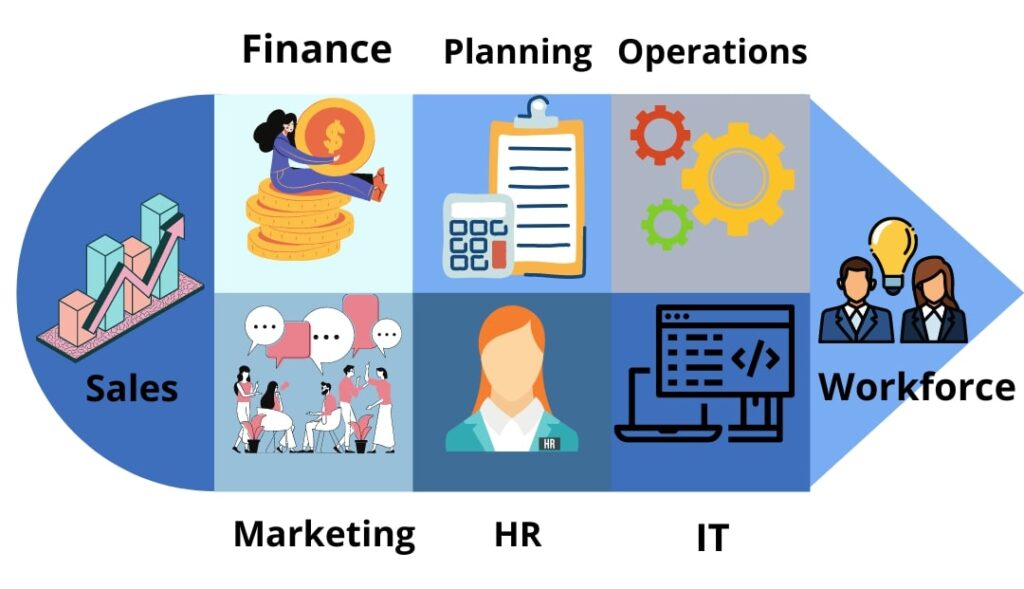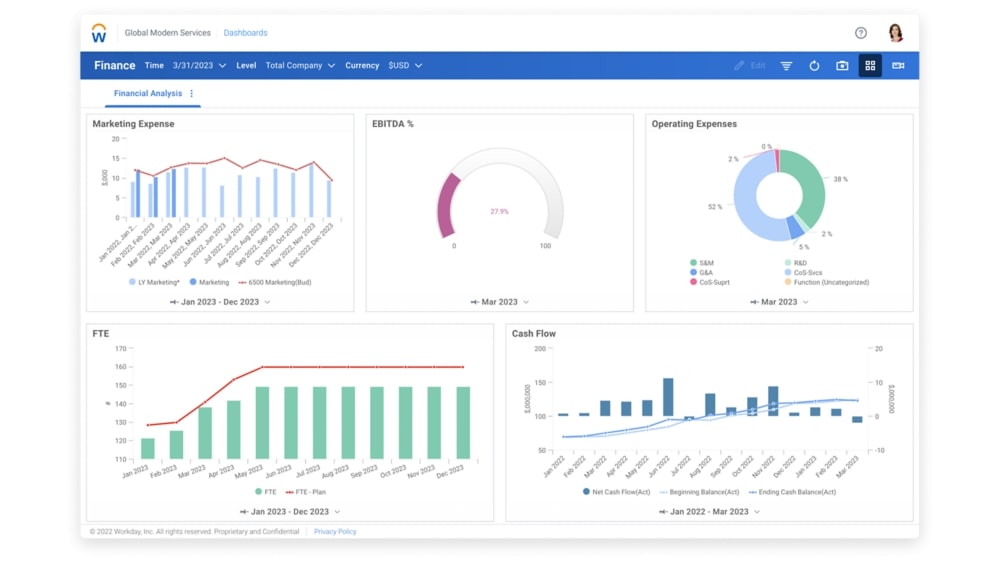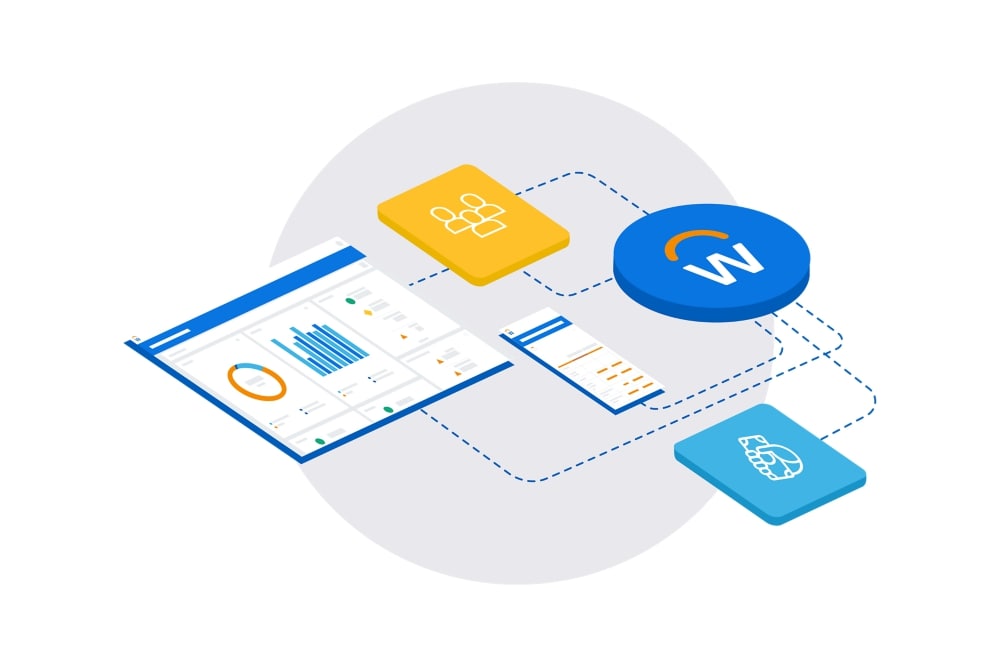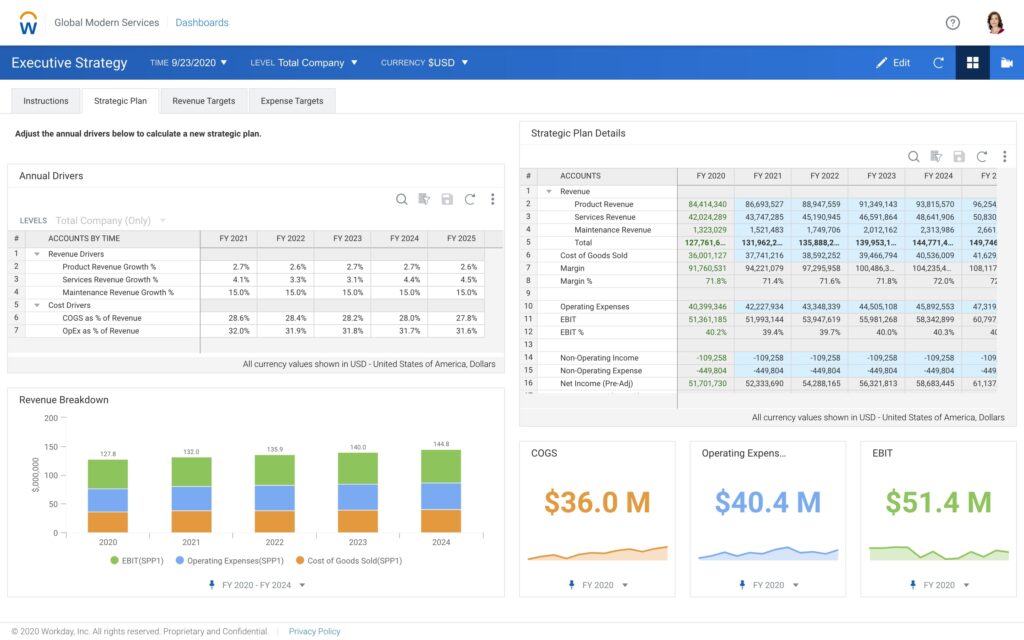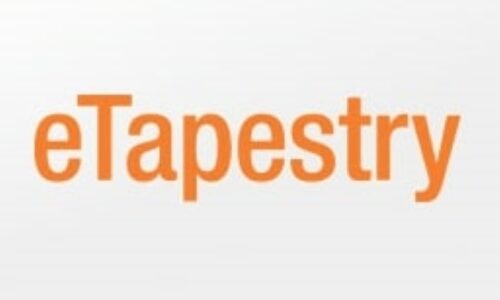In the modern unexpectedly evolving enterprise landscape, businesses face increasing pressure to conform fast to changing marketplace situations, make informed selections, and force sustainable growth. Workday Adaptive Planning emerges as a transformative answer, imparting a complete suite of cloud-based financial planning and evaluation gear designed to empower agencies of all sizes to attain those goals. From stepped-forward forecasting accuracy and streamlined budgeting processes to the most beneficial useful resource allocation and more suitable collaboration, Workday Adaptive gives the ability, scalability, and agility to navigate complex demanding situations and capitalize on rising possibilities.
In this manual, we will explore the blessings of Workday Adaptive in intensity, highlighting its key functions, real-international achievement tales, first-class practices for implementation, and further pointers for maximizing its impact. Discover how Workday Adaptive Planning can help your organization reap monetary excellence, force growth, and innovation, and foster a subculture of non-stop improvement.
Understanding Workday Adaptive Planning:
What is Workday Adaptive Planning?
This is a cloud-based economic planning and evaluation answer that empowers corporations to streamline their planning techniques and make statistics-driven choices with agility. It offers functions consisting of budgeting, forecasting, scenario-making plans, and reporting, all within a collaborative and centralized platform. Key capabilities consist of:
- Budgeting and Forecasting: Create accurate budgets and forecasts with the use of real-time records.
- Scenario Planning: Model specific commercial enterprise situations to evaluate capability consequences.
- Collaboration: Facilitate teamwork and alignment throughout departments.
- Automation: Automate repetitive obligations to store time and enhance performance.
- Integration: Seamlessly combine with different systems for a holistic view of the enterprise.
The Importance of Adaptive Planning:
The Need for Agility in Business Decision-Making:
Adaptive making plans perform an important position in the latest fast-paced and ever-changing commercial enterprise panorama, generally due to the need for agility in choice-making. Businesses perform in surroundings wherein uncertainty and volatility are constants, and traditional plan methods frequently fall quickly to address these demanding situations effectively. Here’s why the ability to evolve fast is essential for a hit business choice-making:
- Rapid Response: Adaptive planning allows groups to reply quickly to converting market situations, rising traits, and unforeseen demanding situations.
- Flexibility: It provides the ability to regulate techniques, allocate assets, and pivot course in actual time.
- Competitive Edge: Organizations that include adaptive making plans advantage a competitive aspect by staying ahead of the curve and capitalizing on opportunities quicker.
- Risk Mitigation: Adaptive planning helps mitigate dangers by allowing businesses to expect and put together for ability disruptions proactively.
- Innovation: By fostering a lifestyle of innovation and experimentation, adaptive making plans encourage non-stop improvement and variation in marketplace dynamics.
Enhancing Performance with Workday Adaptive:
Improved Forecasting Accuracy:
In the latest risky business landscape, accurate forecasting is essential for informed selection-making. Workday Adaptive leverages superior algorithms and real-time records integration to decorate forecasting accuracy drastically. By reading historical statistics, market traits, and enterprise insights, the platform generates forecasts that reflect current realities and assume future developments with precision.
- Leveraging actual-time data and superior analytics for extra unique forecasts.
- Incorporating historical statistics and predictive algorithms to anticipate market developments.
- Enabling scenario planning to version numerous effects and alter strategies as a result.
Streamlined Budgeting Processes:
Traditional budgeting strategies are often manual, time-eating, and error-susceptible. Workday Adaptive streamlines budgeting strategies, making them more efficient, collaborative, and correct.
- Automating repetitive duties like records series and consolidation.
- Facilitating collaboration throughout departments for efficient budget creation.
- Providing workflow control capabilities to music development and making certain accountability.
Optimal Resource Allocation:
Effective resource allocation is vital for maximizing performance and accomplishing strategic goals. Adaptive Planning facilitates corporations to optimize aid allocation via aligning assets with business priorities and identifying areas of opportunity.
- Aligning sources with strategic dreams and priorities.
- Identifying opportunities for value savings and investment optimization.
- Monitoring performance metrics to adjust aid allocation dynamically.
Driving Growth and Innovation:
Empowering Strategic Decision-Making:
Workday Adaptive Planning affords choice-makers with the equipment and insights they want to make informed and strategic choices that power boom and innovation.
- Providing actual-time information and analytics for knowledgeable choice-making.
- Enabling scenario planning to assume market shifts and discover growth opportunities.
- Aligning plans with strategic objectives to force focused and impactful decisions.
Fostering a Culture of Continuous Improvement:
Continuous improvement is important for businesses to live in advance of the curve and pressure innovation. Adaptive Planning supports this with the aid of facilitating collaboration, gaining knowledge of, and edition across the company.
- Encouraging collaboration and comments loops throughout teams.
- Iteratively refining plans primarily based on records insights and overall performance comments.
- Promoting an attitude of innovation and experimentation to drive ongoing development.
Achieving Financial Excellence:
Ensuring Financial Stability and Compliance:
This offers strong features to ensure monetary balance and compliance with regulatory requirements:
- Implementing strong controls and compliance capabilities to fulfill regulatory requirements.
- Providing correct and obvious financial reporting through streamlined procedures.
- Mitigating dangers via figuring out and addressing capacity compliance issues proactively.
Optimizing Investments and ROI:
This empowers agencies to optimize investments and maximize go back on investment (ROI) via informed selection-making and strategic planning:
- Analyzing funding possibilities with the use of actual-time statistics and state of affairs evaluation.
- Aligning investments with strategic goals to maximize ROI and force growth.
- Monitoring funding overall performance and adjusting techniques to optimize returns through the years.
Case Studies: Real-World Success Stories:
Company A: Transforming Financial Planning Processes
Overview:
Company A, a mid-sized manufacturing corporation, faced demanding situations with its conventional economic making plans processes, which have been guide, time-ingesting, and susceptible to errors. They sought to modernize their technique to financial-making plans to enhance accuracy, performance, and agility.
Solution:
Company A carried out Workday Adaptive Planning to streamline its monetary planning techniques. The cloud-based platform supplied centralized surroundings for budgeting, forecasting, and situation evaluation, allowing collaboration throughout departments and locations.
Results:
- Improved Accuracy: Adaptive Planning improved the accuracy of Company A’s forecasts by leveraging actual-time data and predictive analytics, reducing forecasting errors and permitting greater informed selection-making.
- Increased Efficiency: Automation functions in Workday Adaptive decreased the time and effort required for budgeting and forecasting, allowing finance groups to recognize strategic evaluation and cost-introduced sports.
- Enhanced Agility: With Workday Adaptive, Company A gained the ability to adapt quickly to changing marketplace situations and commercial enterprise priorities, permitting them to make well-timed changes to their plans and strategies.
Company B: Gaining Competitive Advantage via Adaptive Planning
Overview:
Company B, a leading retail chain, faced severe competition and converting consumer possibilities inside the retail enterprise. They recognized the want to undertake an extra agile approach to making plans to stay in advance of the opposition and power growth.
Solution:
Company B applied Workday Adaptive Planning to gain a competitive advantage through adaptive making plans. The platform enabled them to forecast demand more appropriately, optimize stock degrees, and align pricing strategies with market trends.
Results:
- Improved Demand Forecasting: Workday Adaptive progressed Company B’s demand forecasting accuracy using studying historic sales information, market tendencies, and consumer conduct styles, permitting them to optimize stock levels and decrease stockouts.
- Enhanced Pricing Strategies: With Adaptive Planning, Company B becomes in a position to analyze pricing elasticity and purchaser segmentation records to increase targeted pricing techniques that maximize sales and profitability.
- Competitive Advantage: By leveraging Adaptive Planning’s advanced analytics and state of affairs analysis skills, Company B gained a competitive advantage within the retail marketplace, driving expanded sales, marketplace share, and client pride.
Best Practices for Implementing Workday Adaptive Planning:
Setting Clear Objectives and Goals:
Before embarking on the implementation of Workday Adaptive, it’s crucial to outline clear goals and dreams that align together with your business enterprise’s strategic priorities. Consider the following high-quality practices:
- Conduct a thorough assessment of your modern-day planning techniques and perceive areas for improvement.
- Define particular, measurable, possible, applicable, and time-certain (SMART) goals that define what you intend to obtain with Workday Adaptive.
- Communicate the objectives and blessings of the implementation to key stakeholders to make certain alignment and buy-in.
Engaging Stakeholders and Securing Buy-In:
Stakeholder engagement is essential for the achievement of any implementation initiative. Here’s how you can correctly engage stakeholders and secure buy-in for Workday Adaptive:
- Identify key stakeholders across distinctive departments and ranges of the organization, along with finance, operations, IT, and government management.
- Communicate the blessings of Workday Adaptive to each stakeholder institution, emphasizing how it’s going to deal with their pain factors and make contributions to accomplishing organizational goals.
- Solicit feedback and input from stakeholders throughout the implementation procedure to make certain their wishes and issues are addressed.
- Provide possibilities for stakeholders to participate in the selection-making system and contribute to the layout and configuration of Workday Adaptive to fulfill their specific necessities.
Investing in Training and Support Resources:
Investing in comprehensive training and guide sources is critical to ensure that users are equipped with the understanding and skills they need to correctly use Workday Adaptive Planning. Consider the subsequent strategies:
- Develop a training plan that includes both preliminary training classes and ongoing guide sources to help customers grow to be proficient with Workday Adaptive.
- Offer numerous training formats, such as trainer-led workshops, self-paced online courses, and on-call tutorials, to accommodate distinct mastering patterns and possibilities.
- Provide access to a knowledgeable support group of workers who can help customers with troubleshooting troubles, answering questions, and imparting steerage on quality practices.
- Encourage non-stop knowledge of and talent development with the aid of presenting advanced education opportunities and promoting expertise sharing among users.
Overcoming Challenges and Pitfalls:
Change Management and Adoption Hurdles:
Change control is important for a successful implementation. Here’s the way to cope with adoption-demanding situations:
- Communication: Communicate the motives for adopting Workday Adaptive and the blessings it’s going to deliver to the business enterprise. Address concerns and include employees in the decision-making procedure.
- Training and Support: Provide comprehensive education to make sure customers are snug with the brand-new device. Offer ongoing help to address any issues or questions that arise.
- Leadership Buy-In: Secure buy-in from senior management to champion the adoption of Adaptive Planning. Their guide and endorsement can help conquer resistance from different stakeholders.
Data Integration and Quality Assurance:
Data integration and fine are fundamental for effectively making plans. Here’s a way to address statistics-related challenges:
- Data Mapping and Mapping: Conduct an intensive evaluation of present records sources and determine how they may combine with Workday Adaptive Planning. Develop a data mapping and integration strategy to make sure seamless information goes with the flow.
- Data Governance: Establish facts governance strategies to preserve statistics integrity and first-class. Implement validation tests and protocols to discover and cope with information errors or inconsistencies.
- Continuous Improvement: Regularly assess and refine records integration processes to make sure they remain aligned with organizational wishes. Monitor data quality metrics and address any problems right away to keep accuracy and reliability.
Monitoring and Adjusting the Planning Process Over Time:
Continuous tracking and adjustment are crucial for optimizing the making plans system. Here’s a way to ensure ongoing achievement:
- Performance Metrics: Define key performance signs (KPIs) to the degree of the effectiveness of Workday Adaptive Planning. Monitor these metrics often to identify areas for development.
- Feedback Loops: Solicit feedback from users and stakeholders to apprehend their experience with Workday Adaptive. Use these remarks to make adjustments and upgrades to the planning technique.
- Scenario Planning: Continuously compare one-of-a-kind eventualities and consequences to assume potentially demanding situations and opportunities. Adjust plans and techniques as a consequence to adapt to changing instances.
- Iterative Improvement: Embrace an iterative approach to planning, wherein you regularly evaluate and refine your approaches based totally on training learned and evolving business desires. This iterative cycle of development guarantees that your making plans and strategies continue to be powerful and aligned with organizational dreams.
Additional Tips:
- Customization and Scalability: Highlight how Workday Adaptive Planning may be custom-designed to fulfill the particular needs of different industries and agencies of various sizes. Emphasize its scalability, allowing corporations to increase and adapt as their necessities evolve.
- User-Friendly Interface: Discuss the person-friendly interface of Workday Adaptive, which makes it accessible to users with various stages of technical expertise. Highlight features which include drag-and-drop capability and intuitive dashboards that beautify usability.
- Integration with Workday Ecosystem: Showcase the seamless integration of Workday Adaptive Planning with different Workday applications, which include Workday Financial Management and Workday Human Capital Management. Explain how this integration presents a complete solution for give-up-to-give-up financial planning and control.
- Mobile Accessibility: Highlight the cell accessibility of Workday Adaptive, allowing users to get admission to essential financial data and insights on the move. Discuss how this selection permits selection-makers to live informed and responsive, even when they’re away from their desks.
- Customer Success Stories: Share real-world examples of companies that have effectively applied Workday Adaptive and realized tangible advantages. Case research and testimonials can provide treasured insights into how Workday Adaptive has transformed economic planning tactics and driven business consequences.
Conclusion:
In the end, Workday Adaptive Planning emerges as a transformative solution for companies looking to beautify their monetary-making plans and choice-making techniques. By leveraging its superior functions consisting of advanced forecasting accuracy, streamlined budgeting procedures, and most fulfilling resource allocation, corporations can obtain extra agility, efficiency, and effectiveness in their operations. Furthermore, Adaptive Planning fosters a tradition of non-stop development by empowering strategic decision-making and innovation.
Through its competencies in making sure of financial stability and compliance, as well as optimizing investments and ROI, Adaptive Planning allows agencies to obtain monetary excellence. As organizations navigate the complexities of the contemporary dynamic market panorama, embracing Workday Adaptive Planning becomes no longer a strategic vital but also a pathway to sustainable increase and fulfillment.
FAQs:
Q1: What is Workday Adaptive Planning?
Ans: Workday Adaptive Planning is a cloud-primarily based economic planning and evaluation solution that enables groups to streamline their making plans strategies, make statistics-pushed decisions, and force commercial enterprise overall performance.
Q2: How does Workday Adaptive fluctuate from traditional planning techniques?
Ans: Unlike conventional making plan techniques that depend upon static spreadsheets and manual records access, Workday Adaptive provides a centralized and collaborative platform with advanced features that include real-time statistics integration, state of affairs making plans, and automation, resulting in extra accuracy, efficiency, and agility.
Q3: Is Adaptive Planning suitable for my enterprise’s length and industry?
Ans: Yes, Workday Adaptive Planning is designed to accommodate agencies of all sizes and industries. Whether you are a small startup or a large organization, Workday Adaptive gives flexibility, scalability, and customization alternatives to meet your precise desires.
Q4: How long does it take to enforce Workday Adaptive Planning?
Ans: Implementation timelines can vary depending on factors which include the size of your organization, the complexity of your making plans approaches, and the level of customization required. In common, implementation can take anywhere from some weeks to several months.
Q5: What form of training and support is to be had for customers of Workday Adaptive?
Ans: Workday provides complete training assets, such as teacher-led workshops, self-paced online publications, and on-call tutorials, to help customers come to be gifted with Workday Adaptive. Additionally, Workday presents ongoing help and gets admission to knowledgeable help personnel to help customers with any questions or problems.
READ MORE: The Power of Inview Alliance Data Warehouse for NHS: A Comprehensive Guide

